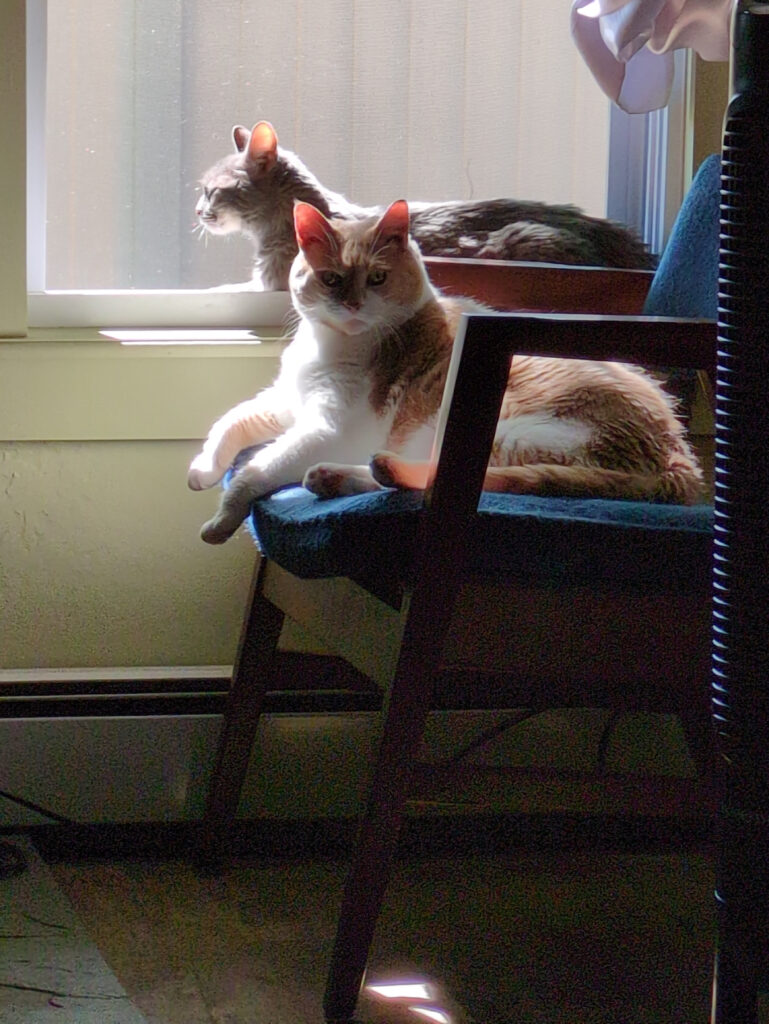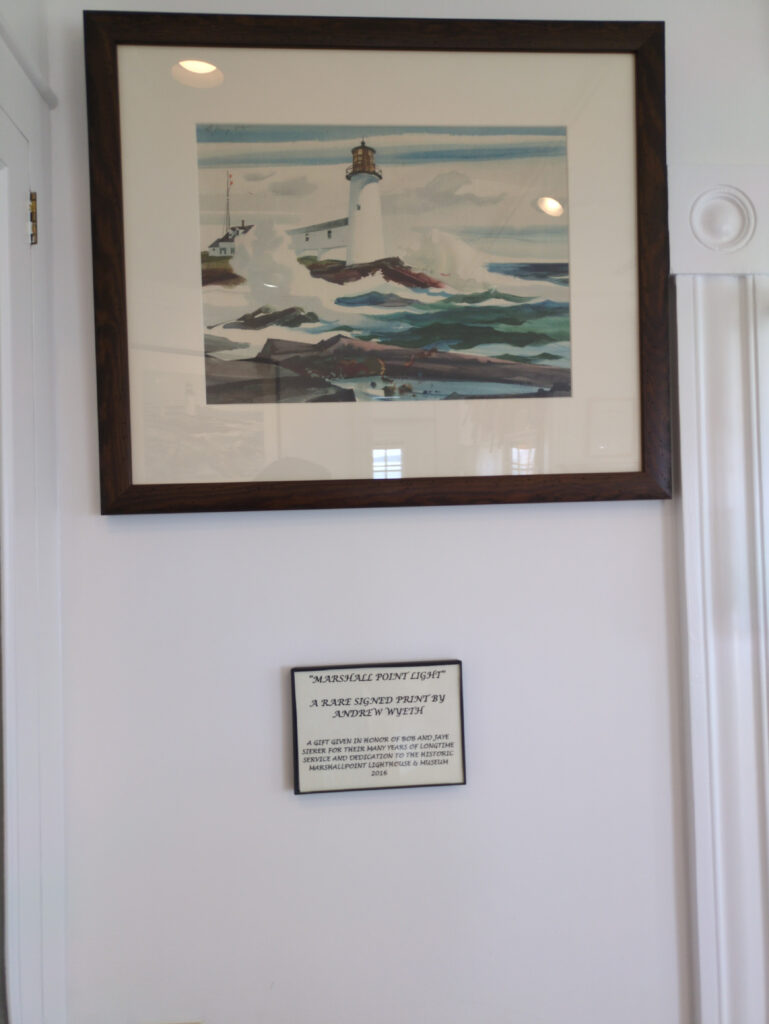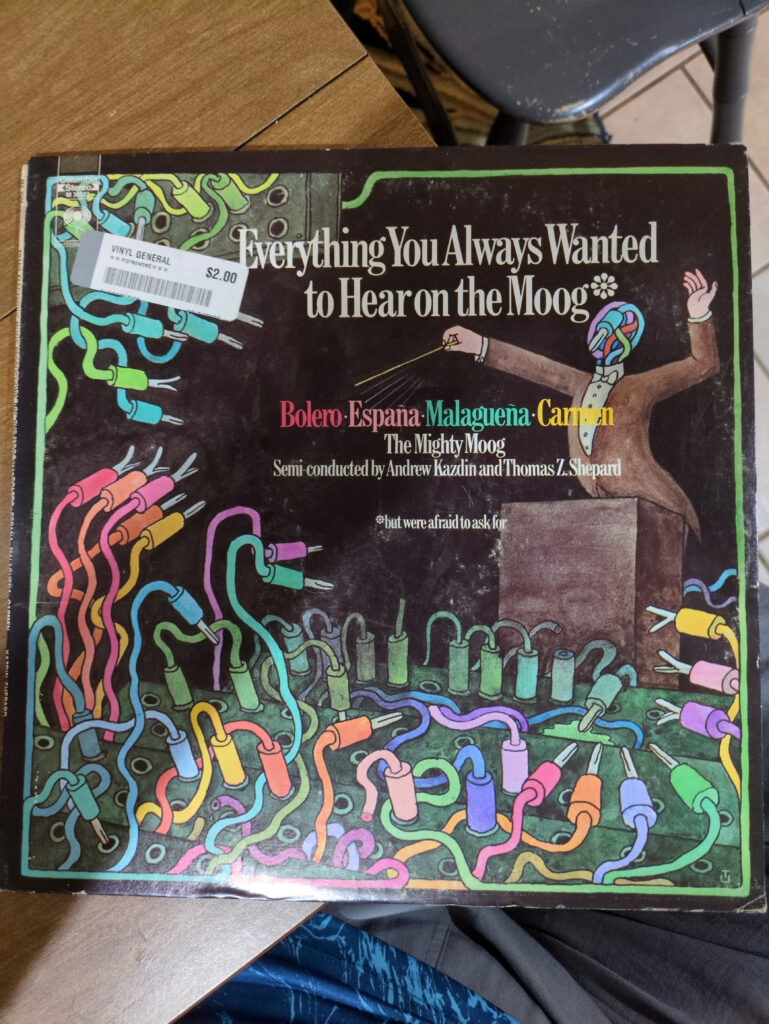House stuff: gutters are cleaned and that one minor elbow repaired with no extra charge (because it was like 12 seconds of work I’m sure) and, thankfully and surprisingly, no need for additional repairs. It all went smooth and fast for once.
In the kitchen, removing the recirculation pump and connecting the hot water direct to the sink didn’t fix the pressure. So we have a plumber scheduled for Monday afternoon. We needed one to mark our “private” (for some reason) water and sewer lines to the water main anyway. The water meter that’s inside our house isn’t ours, but any pipes between it and the main are? Okay whatever.
Music stuff: haven’t recorded anything else, have been busy with other concerns. I am not sure how long I am going to continue working on the current project, extending its length thanks to just how easy it is to come up with neat stuff for it. I do have another idea though… negative space, or ma as the taiko director said. This is something that often gets neglected with ambient and especially drone music.
I did buy a bunch of albums for Bandcamp Friday though. A little premature to do “reviews” for some of these when I haven’t listened to them all in full yet.
Abul Mogard does the most warm, velvety, immersive ambient music that I know of, without being dull or cheesy about it. Dark but hopeful and comforting. This album was mentioned by several people as their favorite, and I understand why.
Kind of jazz-metal-fusion, but with electric harp. The album’s own tags for some reason are just “industrial” and “experimental” which it isn’t particularly, but okay. Emily Hopkins aka Harp Lady (but not the only Harp Lady out there — the one who does YouTube pedal reviews with her harp) with a bassist and a drummer, rocking out. It’s pretty great really, and too short. Want more!
Good ambient electronic stuff from a fellow that-one-TalkBass-thread denizen. I feel like, if there’s bass on this one, it’s integrated even more with the synth sounds than when I do it. Again, a nice and pleasant, varied listen, not boring or cheesy.
Atmospheric, drifting, mysterious. (“Dark” is an overused word in ambient perhaps.) “chimes” is essentially a windchime-like introduction, washing into a deep reverb; “chants” is placed in that same quasi-acoustic space but with a sort of damp rattle holding a trudging rhythm and a simple synth voice (with a gently distorted buzz at some frequencies, like a bad speaker) starting with a sort of swoopy repeated melody line and then breaking out into apparent improvisation. It’s not super sophisticated or complicated but what it is, is good in itself.
Modular synth improv, with the wavefolder and LPG thing and short loops pretty much front and center at times… I have so far treated this as truly ambient and just let my mind go off and do other things, but I want to give it a deep listen some time.
Mostly live improv stuff and mostly Buchla as Todd Barton is wont to do. A few of his personal experiments/studies/ideas. I have only previewed this a bit, but he seems to lean into negative space at times in a way that I have been considering for myself.
Dark atmospheric ambient meets dark Berlin techno. Heavy and hypnotic, and even if aspects of it do move briskly it’s not in a hurry overall. Not everyone’s cup of tea, but I’m into it.
Religion stuff: this festival has been super uplifting for me, between just a lot more informal chatting and reminiscing, and the official stuff and extra heka (“magic” more or less) and prayers. I wish we could all get together in person again… though to be fair the “all” of the past was kind of an illusion, it was a core group of regulars who were able and a few who could manage it a couple of times. Covid and economics have made it more difficult. But maybe someday we’ll have a lesser Midwest gathering of some sort.
I had a lot of thoughts about which god(s) would preside over the coming year, mostly to do with all the different approaches for overcoming adversity and injustice. And apparently, this year’s answer is almost literally a full-spectrum approach: unconditional love, compassion and comfort, drawing together in solidarity, living up to one’s potential, shining and growing — but also standing firm and being unstoppable, and repelling evil with force. All of this was mentioned directly or alluded to. The god of the year is Ra-Heruakhety — sunlight from horizon to horizon, with special emphasis on the dawn.
I’m not a goth but I also tend to keep to the shadows, since I sunburn easily, am a little bit photosensitive in the eyes, and too much heat and bright light triggers anxiety. But I do appreciate the sun both literally and symbolically. As They Might Be Giants say, “here on Earth, there’d be no life without the light it gives,” and as Kormac says in Diablo III, “the Light is both the literal and figurative foe of evil,” and as Petronius and a whole lot of other people have said, “the sun shines for all.”
I have been waiting for the release of Titan Quest II for so long, that I kind of forgot about it… and suddenly an early access version dropped yesterday at a discount. I snatched it up, downloaded it, ran it… and it crashed. I restarted it, created a character… and it crashed, something about insufficient video memory. I started it up, turned down some settings, created the character again, got through an opening trailer… and it crashed again with the same error. Started it up, turned down more settings, smashed a couple of pots, opened my inventory… crash again.
Reboot.
Start it up. Turn down more graphical settings. Play for a few minutes… level up to 2, immediately don’t quite understand where I want to go with my training options. No magic to be seen yet, because I haven’t found a staff or whatever. Eh, I pick something. Go into the cave that I’m supposed to go into for an introductory quest, it starts stuttering really bad, then freezes and crashes.
Reboot.
Uninstall and ask for a refund.
I recall that Titan Quest did start off slowly and was a bit repetitive and tedious in its first couple of hours per playthrough, but picked up after a while and had some really fun special effects and spells. (Sacred and Sacred 2 also were like this… in fact there was a lot of tedious walking at the start for some professions.) But if you wanted to be more of a spellcaster type you definitely would have found a staff very quickly. Mostly though, I just think that style of gameplay has lost its charm for me, and the much more condensed action of Soulstone Survivors — despite also being repetitive and barely having any story — suits me better. It’s all about the replay and experimenting with different skill combinations. And Guild Wars 2 manages some amount of story stuff with replay value and variety; despite the initial, unskippable but short tutorial missions and starting in the same few zones, there’s enough there.
It’s OK, I have plenty to do without adding another game to obsess over.
The other day, I found out I got a raise. I used that as my excuse to go ahead and get myself another effects pedal, that OBNE Dark Star Stereo that I mentioned. And also, cables, because of the stupid TRS jacks on it that aren’t compatible with most other things. I am still waiting on the shipping though.
Still reading the Mabinogion Tetralogy. The “New Tribes” with their bizarre fixation on oppressing women, contrasted with the “Old Tribes” who don’t even believe that fathers are real, is just cheesy. The book really does not come across as particularly feminist, and the way basically all of the women are physically described makes me wonder if Evangeline Walton was either hamfistedly pandering to the male gaze or just a big fan of boobies herself. I have a notion to go find a plain translation after finishing the book, so I can note the differences…



























